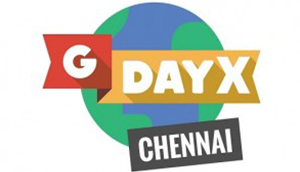There is no magic wand to predict what 2014 will bring for us. There will definitely be innovations in digital marketing and communication. Predicting trends is a fun exercise nevertheless and here is our take on key trends we can expect to witness in the new year.
Political Parties will invest significantly in Social Media
With the upcoming Lok Sabha elections and the emergence of the AAM Aadmi Party, we can expect significant investment of time and marketing spends on social media. Gujarat CM Narendra Modi is already one of the most popular Twitter celebrities with over 30 Lakh Followers and newly elected Delhi CM Arvind Kejriwal has nearly 10 Lakh followers. The action in the online political space is bound to heat up.
 Social Media for Narendra Modi in 2014
Social Media for Narendra Modi in 2014
2014 to be the year of the Mobile Web
Mobile Commerce has long-held promise in India, but looks like 2014 will be the year when the promise turns into reality. Large ecommerce websites like MakeMytrip, Flipkart and Myntra are seeing ~15%-20% of the transactions coming through mobile already. If you run a business, it’s the right time to think through a mobile strategy (just building an app won’t do!) and ensure that your customers can transact with you through their mobiles.
 Mobile Phones has opened up many sectors for innovation
Mobile Phones has opened up many sectors for innovation
Improved User Experiences
In a bid to optimize websites for search engines, many websites had poor user experiences. With refined tastes of the Indian consumers, we are seeing even decade only businesses like Makemytrip.com go in for a fresh and lean User Experience. 2014 will see increased usage of tools like A/B Testing of the website, Heatmaps and consumer studies to get the User Experience right.
Social Media moves from Push to Talk
 Two-way Communication on Social Media
Two-way Communication on Social Media
Many businesses have been using social media like a TV Channel. The story has been – keep pushing messages and spending on Advertisements to get your voice heard. Going forward, brands will need to create content which engages in conversations with users – else, brands can except to get lost in the sea of content being produced online.
Clear ROI on Digital Investments
Many Brands started investing seriously in digital marketing only in 2013. In 2014, brands will expect to see clear ROI for the digital investments. We can expect granular tracking of what’s working and what hasn’t, with a shift to online channels which have a higher ROI.
Would be great to hear from you on which trends you agree with and disagree with – please share your thoughts in the comments.


















